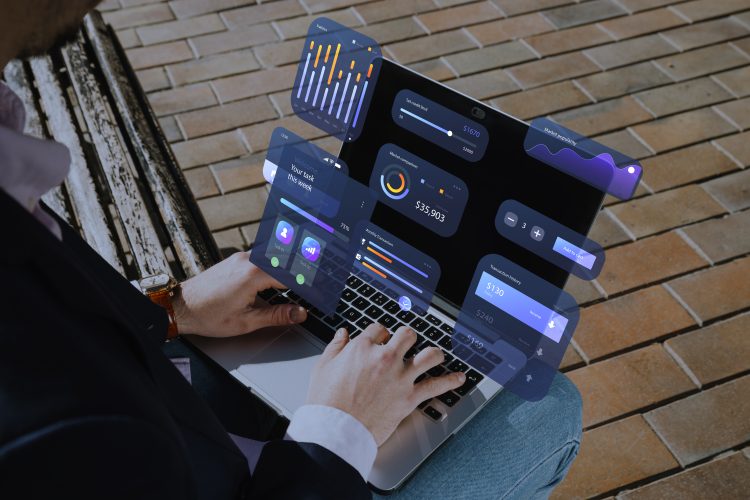What Is a Human Resource Management Information System?
A Human Resource Management Information System (HRMIS) is a digital platform that helps organizations manage employee data, streamline HR processes, and improve decision-making. Instead of manually handling payroll, recruitment, or employee records, HR managers use HRMIS to centralize everything in one place.
Think of it as the backbone of HR operations—from hiring to retirement.
? In simple words: HRMIS is HR powered by technology and data.
Why Do Businesses Need an HRMIS?
In today’s fast-paced world, HR teams cannot rely only on spreadsheets or paper files. They need real-time insights to make smarter choices.
Here’s why businesses adopt HRMIS:
- Efficiency: Automates repetitive tasks like payroll and leave management.
- Accuracy: Reduces errors in employee records and compliance.
- Engagement: Provides self-service portals where employees update info or request leave.
- Scalability: Grows with the company and adapts to workforce changes.
Why is HRMIS important for my business? ? Because it saves time, reduces HR errors, and gives leaders better insights into their workforce.
How Does a Human Resource Management Information System Work?
An HRMIS works by collecting, storing, and processing HR data in a centralized database.
Key Functions:
- Data Collection: Employee details, payroll, performance, and attendance.
- Processing: AI-driven analytics for HR trends and workforce planning.
- Reporting: Dashboards that give managers real-time insights.
How many employees are due for appraisal this quarter? HRMIS can generate a report instantly.
Who Uses a Human Resource Management Information System?
HRMIS isn’t just for HR managers. It benefits multiple groups:
- HR Teams: To handle recruitment, onboarding, and payroll.
- Managers: To track performance and plan promotions.
- Employees: To check payslips, request leave, and update profiles.
- Executives: To analyze workforce trends and make strategic decisions.
What Are the Types of HRMIS?
Different organizations need different HR tools. Common types of HRMIS include:
- Operational HRMIS: Handles day-to-day HR tasks like payroll and attendance.
- Tactical HRMIS: Supports middle managers with staffing and training decisions.
- Strategic HRMIS: Helps executives with long-term workforce planning.
Benefits of Using HRMIS in Modern Businesses
Here’s what companies gain from adopting HRMIS:
- Faster Recruitment: AI-powered screening and automated shortlisting.
- Employee Self-Service: Workers manage their own info, saving HR time.
- Data-Driven Decisions: Reports that help HR predict turnover or skill gaps.
- Regulatory Compliance: Automated tax filing, labor law adherence, and record keeping.
- Cost Savings: Less paperwork and fewer HR errors mean lower costs.
Common Challenges of HRMIS
While HRMIS offers huge benefits, businesses must handle challenges too:
- Implementation Cost: Initial setup can be expensive for small firms.
- Training: Employees may need time to adapt to new systems.
- Data Security: Sensitive HR data requires strict cybersecurity measures.
- Integration Issues: Linking HRMIS with existing software (like accounting) can be tricky.
How AI Is Transforming Human Resource Management Information Systems
AI is reshaping HRMIS into smart, predictive systems.
- Predictive Analytics: Forecast employee turnover before it happens.
- Chatbots: Answer employee questions like “When is my next payday?”
- Automated Screening: AI scans resumes and finds the best candidates.
- Sentiment Analysis: Understands employee satisfaction through feedback and surveys.
How does AI improve HRMIS?
Answer: It automates routine HR tasks, predicts workforce trends, and boosts employee experience.
HRMIS vs HRIS vs HCM: What’s the Difference?
These terms are often confused:
- HRMIS (Human Resource Management Information System): Focuses on information management and reporting.
- HRIS (Human Resource Information System): Manages employee data like payroll and records.
- HCM (Human Capital Management): Broader approach, includes talent management and workforce strategy.
How to Choose the Right HRMIS for Your Organization
Before adopting HRMIS, consider:
- Company Size: Small businesses may only need payroll and attendance, while large enterprises need AI-driven analytics.
- Cloud vs. On-Premises: Cloud-based HRMIS is flexible, while on-premises offers more control.
- Security: Look for encryption, role-based access, and compliance with GDPR or local labor laws.
- Integration: Ensure HRMIS works with accounting, ERP, and CRM systems.
Future of Human Resource Management Information Systems
The future is AI-powered, cloud-first, and employee-centric.
- AI-driven HR assistants will answer employee queries instantly.
- Predictive workforce planning will become standard.
- Mobile-first HRMIS will let employees manage everything from their phones.
- Personalized learning paths will help retain talent.
FAQs
Q1: What is an example of a human resource management information system?
A: SAP SuccessFactors, Oracle HCM Cloud, and Workday are popular HRMIS platforms.
Q2: How does HRMIS support decision-making?
A: By generating reports and analytics that guide HR strategy, staffing, and employee retention.
Q3: Is HRMIS suitable for small businesses?
A: Yes, cloud-based HRMIS offers affordable packages for startups and SMEs.
Q4: How secure is an HRMIS?
A: Modern HRMIS use data encryption, role-based access, and compliance standards to keep sensitive HR data safe.
Q5: What’s the future of HRMIS in AI-driven workplaces?
A: Expect more automation, predictive analytics, and mobile-first features tailored for hybrid workforces.
Final Thoughts
A Human Resource Management Information System is no longer optional—it’s a must-have tool for businesses that want to thrive in a digital-first, AI-driven economy. From simplifying payroll to predicting employee turnover, HRMIS helps organizations work smarter, not harder.

